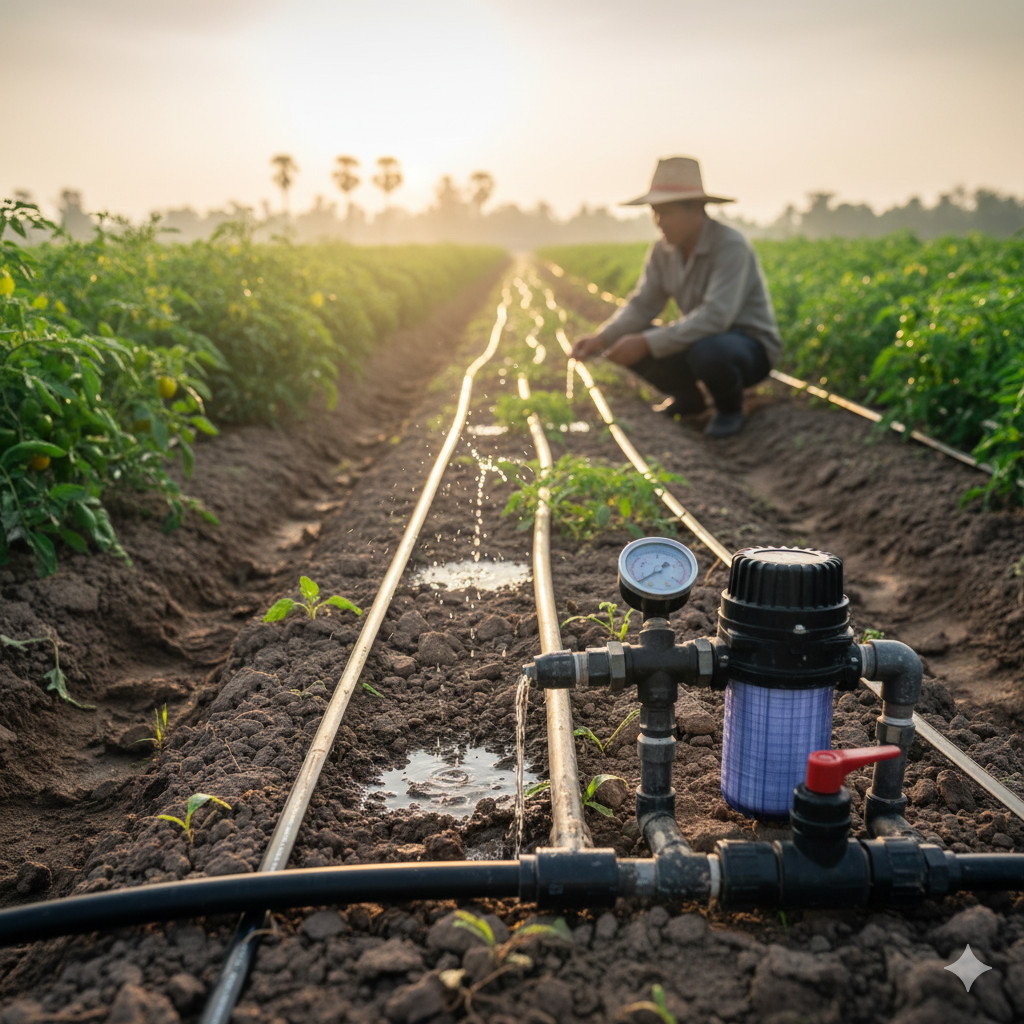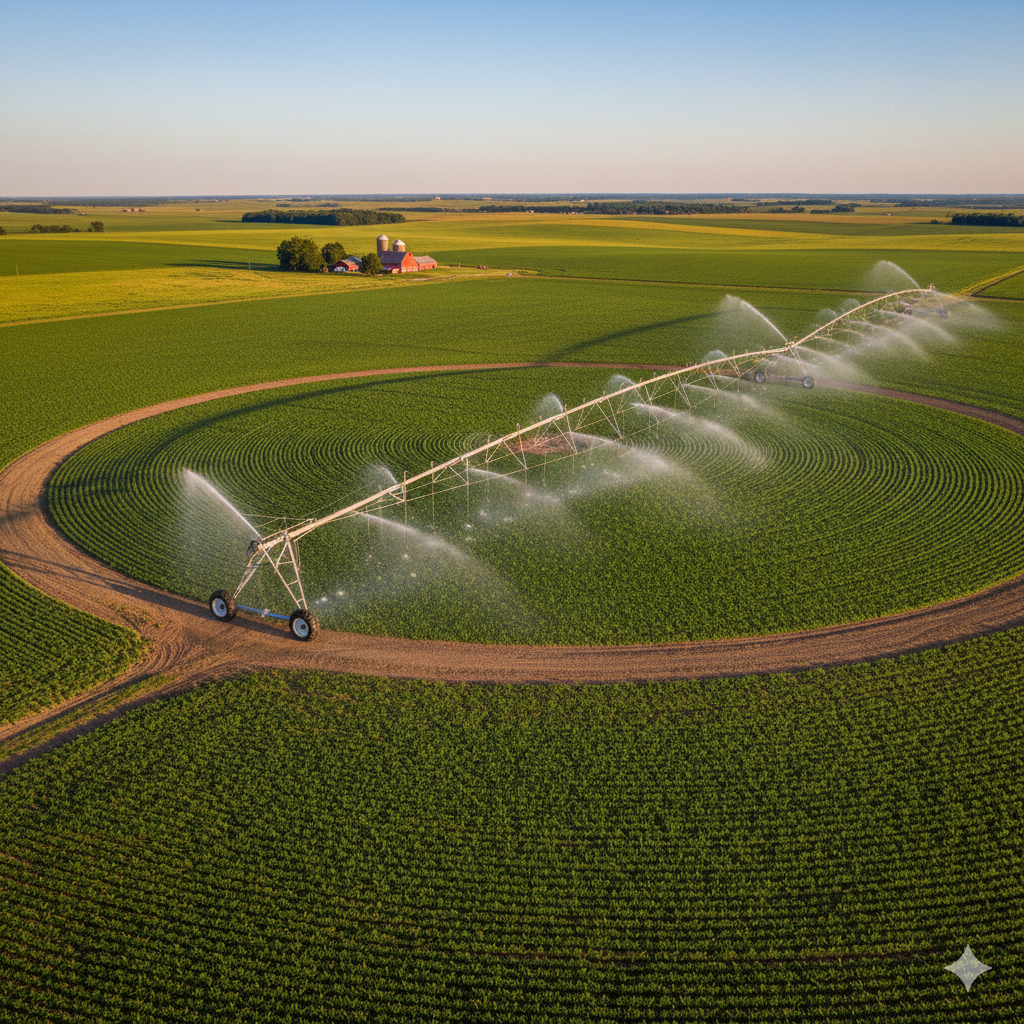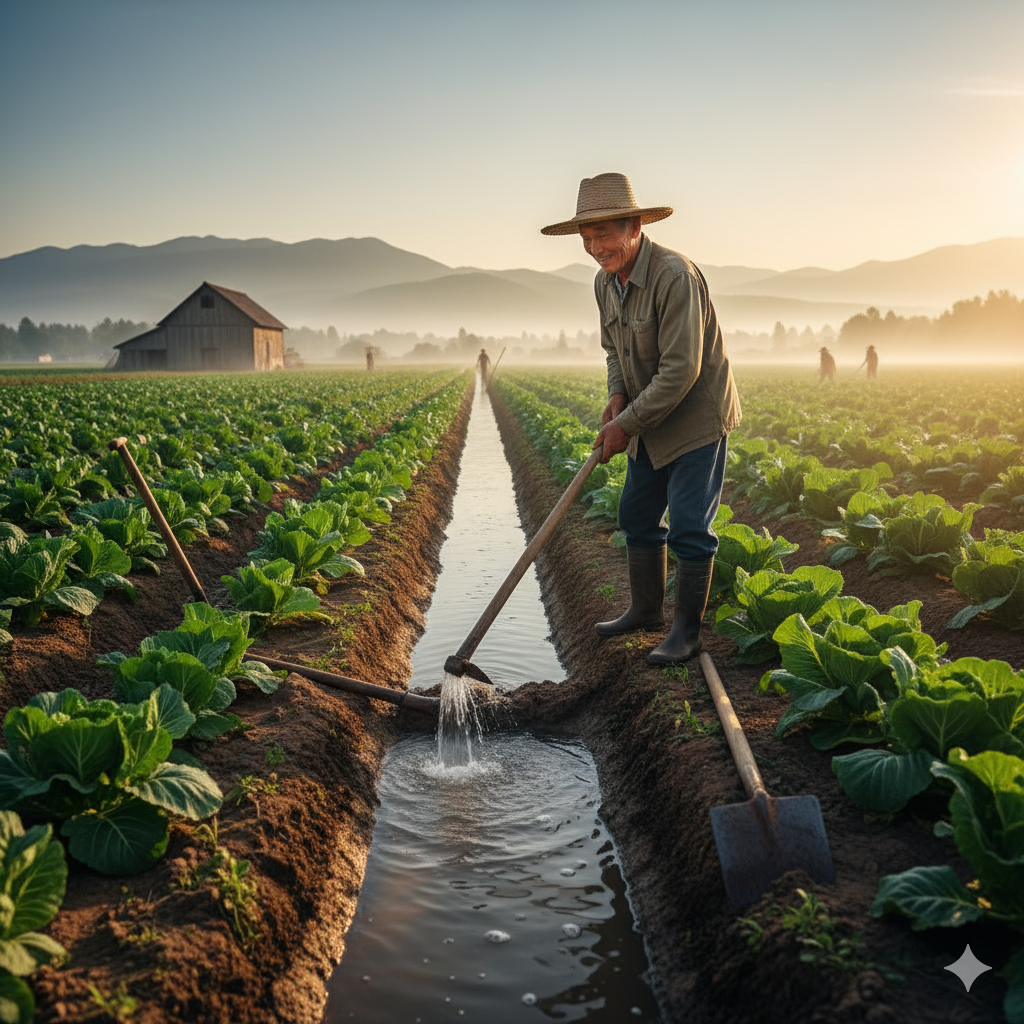Irrigation Tools
Agricultural irrigation tools are essential implements and systems used to supply water to crops in fields, supplementing natural rainfall. These tools are crucial in areas with insufficient or unpredictable precipitation, enabling farmers to increase yields and ensure stable food production. The selection of the right tool depends on various factors, including water availability, crop type, soil, and climate. Simple methods like furrow irrigation involve using basic tools like shovels and hoes to create channels for water to flow by gravity. More efficient systems like sprinkler irrigation use pumps and a network of pipes to spray water over crops, simulating rain. These systems include large-scale tools like center pivot irrigators as well as more portable setups. However, the most water-efficient method is drip irrigation, which uses a network of pipes and emitters to deliver water directly to the plant roots. Drip irrigation minimizes water waste from evaporation and runoff and is ideal for high-value crops and orchards. Other important tools include pumps, filters, and automated controllers and sensors that help optimize water usage. The evolution of these tools, including the rise of smart irrigation technologies, highlights the ongoing effort to manage water resources efficiently and sustainably in modern agriculture.



Agricultural irrigation tools are fundamental to modern farming, allowing for controlled water delivery to crops and significantly boosting productivity, especially in arid and semi-arid regions. The most traditional method, furrow irrigation, relies on gravity to move water through channels dug between crop rows. While it’s a simple and inexpensive system, it is often inefficient due to high water loss from evaporation and uneven distribution, and it is not suitable for all types of soil. A more advanced method is sprinkler irrigation, which mimics rainfall by spraying water from a system of pipes and nozzles. This approach, which includes large-scale tools like center pivot and lateral move systems, provides better water uniformity and can be used on a wider variety of terrains. However, it still suffers from some evaporative loss and can be impacted by wind. The most efficient and precise method is drip irrigation, which delivers water directly to the plant’s root zone through a network of tubes and emitters. This system drastically reduces water waste and can lead to significant water savings and increased yields. The tools for drip irrigation, such as drip tapes, filters, and pressure regulators, allow for precise water and nutrient application, a practice known as fertigation. The integration of these tools with modern technology, such as automated moisture sensors and smart controllers, represents the cutting edge of water management in agriculture, enabling farmers to apply water exactly when and where it is needed to maximize crop health and minimize waste.
